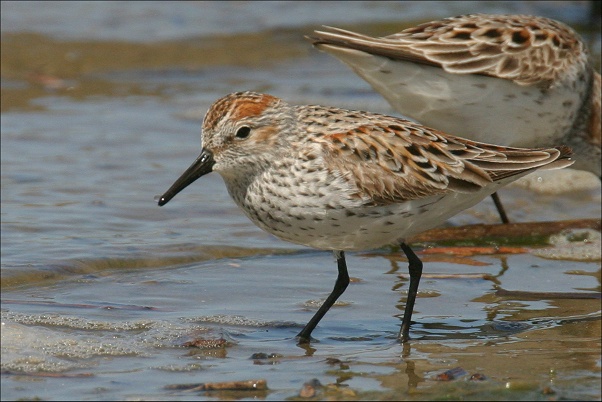
Date: 2005-04-10
Lens: Canon 500mm IS F4

 Western Sandpiper
Calidris mauri
Western Sandpiper
Calidris mauri
 Description
DescriptionOften associating with other sandpipers, the Western will feed in deeper water than the others. This bird uses its bill to probe the mudflats for insects, small crustaceans and mollusks. The Western Sandpiper is the most abundant shorebird in western North America, with numbers upwards of four million individuals.
General: Sexes similar. 6.5 inches in length.
Adult Alternate: Rusty crown and upper back. Back and wing covert feathers are black with white edges. White underparts. Dark V-shape patch on flanks. Breast heavily spotted and streaked with black. Faint white supercilium. Black, slightly down-curved bill and dark legs.
Adult Basic:Dull gray-brownish crown, cheeks, and upper back. Back and wing covert feathers are dull gray-brownish with thin black centers. Faint, partial gray-brownish breast band. White underparts. Dark V-shape patch on flanks. Faint white supercilium. Black, slightly down-curved bill and dark legs.
Juvenile: Dull gray-brownish crown. Rusty upper back. Back and wing covert feathers are dull gray-brownish with black bases and whitish-gray edges. Faint, partial gray-brownish breast band. Dark V-shape patch on flanks. Faint white supercilium. Black, slightly down-curved bill and dark legs.
Coastal and inland mudflats.
 Nesting
Nesting4 cream colored eggs marked with red-brown spots. The eggs have a 20-22 day incubation period. Fledging occurs in 19-21 days. The nest is a grass-lined ground depression on either wet or dry tundra.